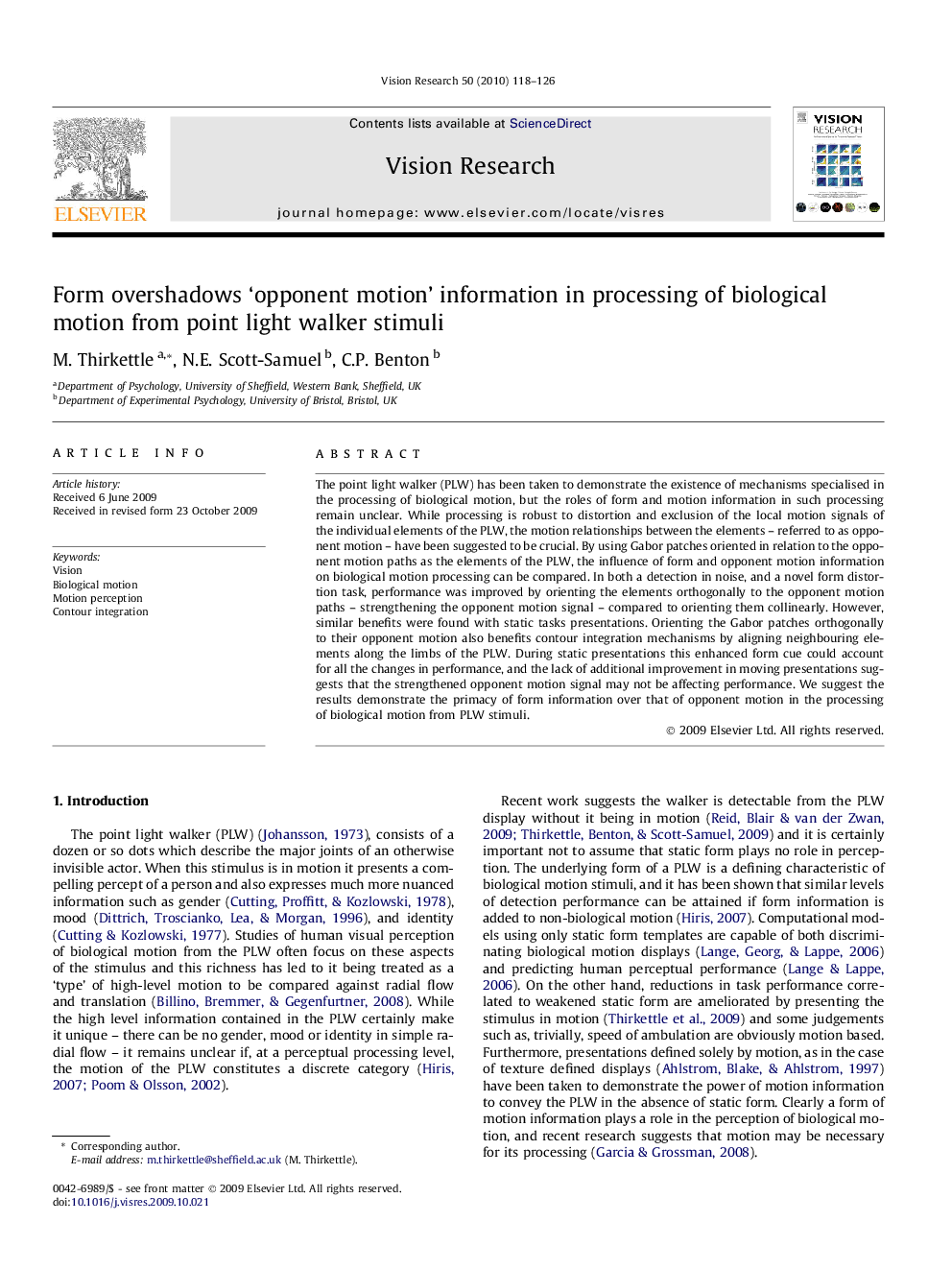| Article ID | Journal | Published Year | Pages | File Type |
|---|---|---|---|---|
| 4034595 | Vision Research | 2010 | 9 Pages |
The point light walker (PLW) has been taken to demonstrate the existence of mechanisms specialised in the processing of biological motion, but the roles of form and motion information in such processing remain unclear. While processing is robust to distortion and exclusion of the local motion signals of the individual elements of the PLW, the motion relationships between the elements – referred to as opponent motion – have been suggested to be crucial. By using Gabor patches oriented in relation to the opponent motion paths as the elements of the PLW, the influence of form and opponent motion information on biological motion processing can be compared. In both a detection in noise, and a novel form distortion task, performance was improved by orienting the elements orthogonally to the opponent motion paths – strengthening the opponent motion signal – compared to orienting them collinearly. However, similar benefits were found with static tasks presentations. Orienting the Gabor patches orthogonally to their opponent motion also benefits contour integration mechanisms by aligning neighbouring elements along the limbs of the PLW. During static presentations this enhanced form cue could account for all the changes in performance, and the lack of additional improvement in moving presentations suggests that the strengthened opponent motion signal may not be affecting performance. We suggest the results demonstrate the primacy of form information over that of opponent motion in the processing of biological motion from PLW stimuli.
